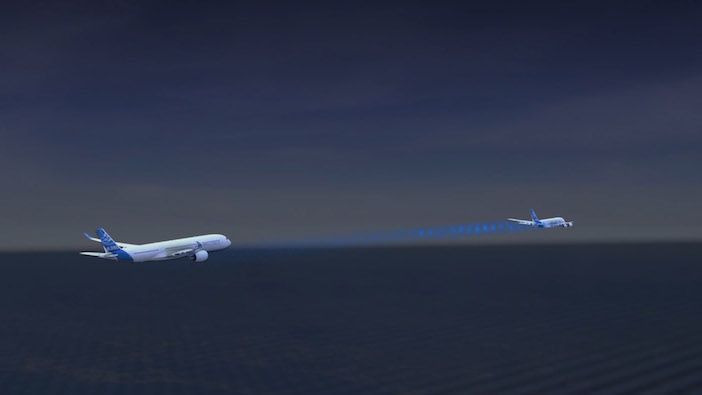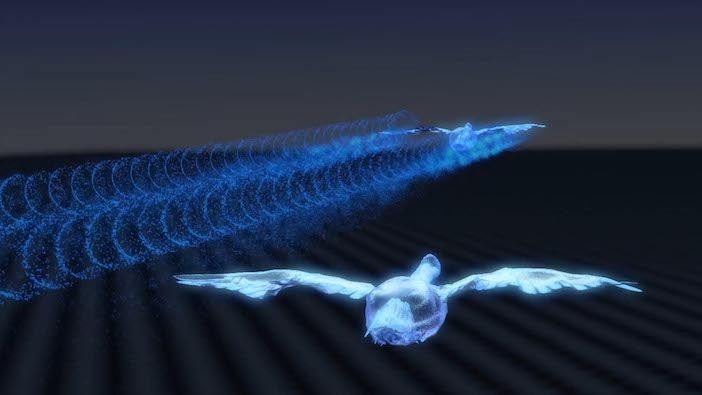Airbus is to flight test a flight technique known as “wake-energy retrieval” next year that could reduce the fuel consumption of aircraft on long-haul flights by up to 10%.
Wake-energy retrieval is a phenomenon observed in migrating birds such as geese, which fly in a “V” shape to save energy and benefit from the air upwash of the leader.
When a bird flaps its wings, air flows over the wings and swirls upwards behind the wingtips. This flow creates a wake – a swirling movement of air that contains kinetic energy. When the wake drags through the surrounding air, it creates smooth currents known as upwash. When another bird enters the upwash, it benefits from free lift, which enables it to stay aloft and expend a lot less energy.
Aircraft also create a wake while flying and Airbus engineers want to test if wake-energy retrieval can reduce engine thrust and fuel consumption by positioning a follower aircraft in the air upwash of a lead aircraft’s wakes.
The fello’fly project aims to demonstrate the technical, operational and commercial viability of two aircraft flying together for long-haul flights using two of the company’s A350s in a series of flight tests before July next year. Full-scale flight trails will take place in an operational environment, most probably over the Atlantic during 2021.
If the flight testing is successful, wake-energy retrieval could be introduced into commercial aircraft flights within the next five years, believes Airbus.
The company has already run a series of flight tests in 2016 that showed that fuel savings could be achieved when two aircraft fly approximately 3km apart without compromising passenger comfort. The test aircraft will remain around 3km apart in the tests planned for next year.
According to Airbus air traffic management technology was not mature enough to enable aircraft to fly so close enough together in 2016. But the advent of real-time flight tracking, such as ADS-B Out, now makes the technique more viable for commercial aircraft.

The technical solution that Airbus is working on involves developing pilot assistance functions necessary to ensure the aircraft they are flying remain safely positioned in the updraft of air of the aircraft they are following, maintaining the same distance, at a steady altitude. The technology can be used on any aircraft, said Airbus.
In addition, Airbus is working closely with airlines and Air Traffic Control (ATC) providers as part of the new demonstrator project to identify the operational needs and suitable solutions for planning and executing this type of flight.
Nick Macdonald, fello’fly demonstrator leader at Airbus said, “Safety is our top priority at Airbus. We’re working to develop the functions necessary to assist pilots to safely stay in position behind the leader during a long-haul flight.
“To achieve this evolutionary step in operations, we have to look at the challenge from the perspective of all industry stakeholders. It’s a great opportunity for our industry to demonstrate a joint commitment to reducing our use of fossil fuels”.





